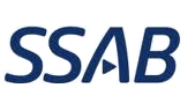Steel Mills

SSAB Americas' New EPDs Tell Strong Sustainability Story
Written by Laura Miller
September 16, 2022
SSAB Americas is forging ahead to show customers, the government, and other stakeholders that it is serious about sustainability and achieving its ultimate goal of “net zero” emissions.
The flat-rolled steelmaker recently released Environmental Product Declarations (EPDs) for its steel plate and coil products that show it is well ahead not just of others in the industry when it comes to its environmental impacts but also of emission-threshold limits already set by industry associations and government agencies.
Steel Market Update sat down for an exclusive interview with Chuck Schmitt, president of SSAB Americas, and Jeff Moskaluk, SSAB Americas’ senior vice president of commercial sales, to discuss the steelmaker’s position as a leader in the sustainability race.
![]() EPDs are not new to the industry. The declarations allow companies to easily provide and showcase definitive environmental and life cycle data for suppliers, customers, and others. This allows for simple comparisons between different companies’ products. With the economy moving towards lowering carbon emissions and taking sustainability and environmental impacts more into consideration, EPDs are becoming increasingly important both internally and externally for steel companies.
EPDs are not new to the industry. The declarations allow companies to easily provide and showcase definitive environmental and life cycle data for suppliers, customers, and others. This allows for simple comparisons between different companies’ products. With the economy moving towards lowering carbon emissions and taking sustainability and environmental impacts more into consideration, EPDs are becoming increasingly important both internally and externally for steel companies.
With EPDs, “We are capturing the progress that we are making with new investments and activities specifically designed to reduce our emissions,” Schmitt explained. “We’ve now started our journey to becoming ultimately a fossil free steel company. Internally, it serves as a report card or progress report for us. They’re also an external certification that points to our progress. … It immediately allows us to communicate independent data of our environmental footprint as measured by lifecycle analysis.”
The release of the company’s EPDs happens to coincide with an important announcement from the White House last week on its “Buy Clean” initiative. The initiative focuses on the purchase of more environmentally sustainable products, including steel and concrete, for government-funded construction and other projects.
The initiative will drive steel consumption with its strong Buy America requirements, and now with environmental and sustainability requirements too. “It’s a win-win for us,” Schmitt commented.
Consumers are already moving toward electric vehicles and sustainable construction and energy projects. The Buy Clean program combined with other government-incentive programs such as EV tax credits from the recently passed Inflation Reduction Act will result in these projects being well funded, Schmitt noted.
SSAB is already seeing demand for more sustainable steels, particularly from customers within the automotive and construction industries.
A major infrastructure bill was passed by the federal government earlier this year, and although real demand in the marketplace has yet to be seen from that bill, engineering and design work for projects has begun. A boost in steel demand for fabrication and installation of those projects should begin to be seen late in the first quarter and throughout the rest of 2023, Moskaluk said.
“I think we’re at the burgeoning end of what is going to be a path we will travel together with our customers. We’re seeing more and more customers as they look at their own sustainability stories looking inside their supply chain to see what they can add to their story. As a supplier to them … we’re presenting them with the best possible option to include in their supply chain as they tell their story. Things like EPDs and our sustainable messaging report help to backstop their story as well,” Moskaluk told SMU.
Stockholm, Sweden-based SSAB has been telling its own strong sustainability story for some time. Since 2016, SSAB has had a corporate initiative to become a fossil-free company across all of its operations by 2030.
SSAB Americas is “all in” on that corporate objective and SSAB’s position in general as a global leader on sustainability, Schmitt said. Because of different locations and equipment at SSAB’s mills in Sweden and its mills in Alabama and Iowa, the two parts of the company are taking somewhat different approaches to reaching the ultimate goal of getting to full decarbonization and zero emissions without the use of offsets or credits.
With continuing discussions around the future of carbon taxes and carbon border adjustments, Europe and North America will likely become aligned at some point around setting up international standards that all companies can agree to. Although there have been some efforts to set up international standards, it’s still too early to know what those standards will be or how they will ultimately be negotiated. Until then, “We’ll continue to blaze our own path,” Schmitt stated.
The newly-released EPDs from SSAB Americas show that the company is already well ahead of some standard programs. SSAB says the EPDs show the company’s products are 43% lower than current American Iron and Steel Institute (AISI) standards and 40% lower than the standard required for the Buy Clean California program, Moskaluk explained.
“For now, we’re really focused on our manufacturing process rather than standards that may take a different path,” he noted.
The sustainability work SSAB has been doing since 2016, including the newly-released EPDs, allows the company to show its customers just how clean its production processes have become and how its steel products are cleaner on average than what they can find elsewhere in the marketplace. “We are the market leaders if [customers] are looking to choose to partner with a low-CO2 emissions steel plate producer,” Moskaluk noted.
With more than 70% of the country’s steelmaking coming from the cleaner electric arc furnace (EAF) route, the American steel industry, through organizations such as AISI and the Steel Manufacturers Association (SMA), has been doing a good job of telling its own story of sustainability. The industry has demonstrated that, in general, steel is a great sustainable solution. SSAB’s EPDs allow the company to provide concrete data, allowing it to go even further in telling its own story.
SSAB Americas has invested heavily in sustainability and recycling initiatives, from utilizing steel scrap in its EAFs, to recycling EAF baghouse dust and metallics, to recycling tires as a carbon-injection substitute. Ninety-seven percent of the materials it uses in its steelmaking processes are recyclable, but that doesn’t mean the company is anywhere near done making improvements from a recycling standpoint. Further opportunities exist to recapture gases used in melting and casting and to use them in other parts of the manufacturing process. The utilization of biofuels and biochar are other areas of opportunity as well, the executives said.
SSAB’s Iowa mill is currently down for a planned maintenance outage through Oct. 5. Among other things, the outage will allow the company to expand its use of biogas renewable natural gas, install new equipment, and increase storage capabilities.
“The industry is perceived by many to be very old and stagnant, but we’re doing new things every month in our steelmaking process,” Schmitt said.
“We’re never happy to stand still. We’re always moving forward,” Moskaluk noted.
“All indications are that we seem to be ahead of the game if we hope to be a leader in the steel industry on sustainability and decarbonization,” Schmitt added.
By Laura Miller, Laura@SteelMarketUpdate.com

Laura Miller
Read more from Laura MillerLatest in Steel Mills

Nucor names Batterbee, Bledsoe to HR roles
Nucor Corp. has promoted Thomas J. Batterbee to the position EVP of human resources and talent and appointed Elizabeth Bledsoe to the newly created position of president of human resources and talent.

Millett sees tariffs, CORE case benefiting SDI
Steel Dynamics' top exec thinks Trump’s tariff policies, as well as the results from the recent CORE case, will prove advantageous to the Fort Wayne, Ind.-based steelmaker and aluminum company.

USW digs in on opposition to USS-Nippon deal
“We remain deeply concerned about the national and economic security implications of the subject transaction,” the union stated in the letter dated April 21.

SDI’s Q1 earnings slump on-year, but up sequentially
SDI earnings slip in first quarter year over year, but are up sequentially.

POSCO inks MoU with Hyundai on Louisiana EAF mill
POSCO has signed a Memorandum of Understanding (MoU) with Hyundai Motor Group that includes an equity investment in Hyundai’s previously announced EAF mill set to be built in Louisiana.
